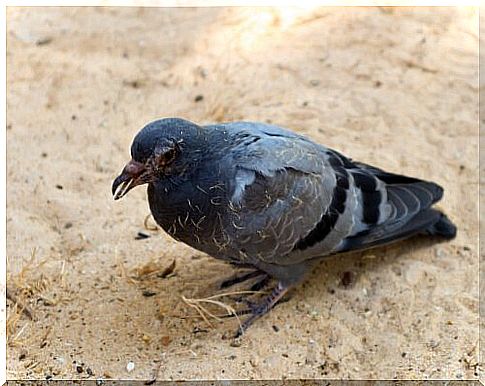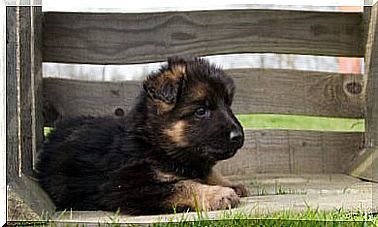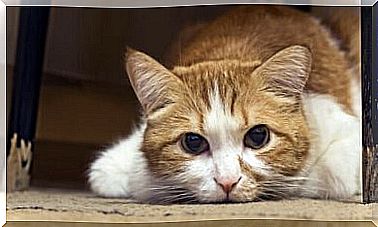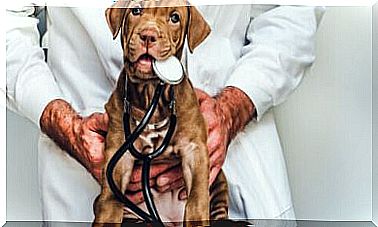Pigeon-borne Diseases

Considered the pest of flying rats, these birds, in addition to being irritating, can transmit diseases. Furthermore, those who are most at risk of being infected are people who have pigeon farms in poor hygienic conditions. Know some diseases transmitted by pigeons.
Pigeons can be loved or hated, according to individual taste. However, there is a very deep-rooted belief that they cause a multitude of illnesses in humans. In fact, the risk of contagion is usually very limited. Anyway, we will tell you what the main diseases transmitted by pigeons are.
Some diseases transmitted by pigeons
If there are birds that have a bad reputation, it is pigeons. Considered by many to be an urban pest, they can cause annoyance with their noise, their nests built into buildings and, above all, their droppings.
However, it is not common for these birds to infect people. Thus, those who are most at risk are generally those who have breeding or pigeon houses without adequate hygienic conditions.

Below, we detail five of the main diseases transmitted by pigeons:
– Extrinsic allergic alveolitis
This disease attacks the lung through an allergic reaction, causing hypersensitivity pneumonitis. Its cause is found in the continuous exposure to dust that comes off the feathers or fecal material of the pigeons.
Those affected – especially those who work in breeding sites – have a cough, fever and difficulty breathing. There is a chronic form that produces persistent cough and causes changes, some irreversible, in the lung.
– Salmonellosis
Pigeon droppings can also be a route of salmonella infection. Contagion occurs when you consume food that was in contact with contaminated fecal matter.
This bacteria causes food poisoning that causes fever, abdominal pain, nausea, vomiting and diarrhea. In severe cases, it can lead to dehydration and even death, especially if those affected are young children or the elderly.
– Histoplasmosis
Another disease transmitted by pigeons is caused by a fungus called histoplasma. This organism is found in pigeon droppings, especially in places where large amounts of droppings, such as on perches, are collected. Humans are infected by breathing the spores, but there is no person-to-person transmission.
In general, histoplasmosis is mild and has no symptoms. In any case, it can affect more those who have weaker immune systems (children, elderly, sick). It mainly attacks the lungs, causing discomfort, fever, dry cough or chest pain. And, if the case is serious, the disease can spread to other organs.

– Cryptococcosis
The disease is caused by a yeast-like fungus present in the feces of these birds. The contagion mainly occurs if you are in permanent contact with the nests and the yeasts are inhaled.
Cryptococcosis particularly affects people with low immunity. Initially, a lung infection usually presents with cough, fever, malaise, and bloody sneezing. The condition leads to meningitis or meningoencephalitis.
– psittacosis
Also called ornithosis or avian chlamydiosis, this zoonosis is transmitted by pigeons and parrots, among other birds. The contagion occurs, above all, in workers in the poultry sector and, mainly, through the inhalation of dust released from dry feces and nasal secretions.
Psittacosis can also be transmitted between people through saliva. It presents as a febrile respiratory illness that causes headaches and, in certain cases, leads to pneumonia. Bacteria, through the blood, can spread to other organs and cause, for example, digestive diseases.









